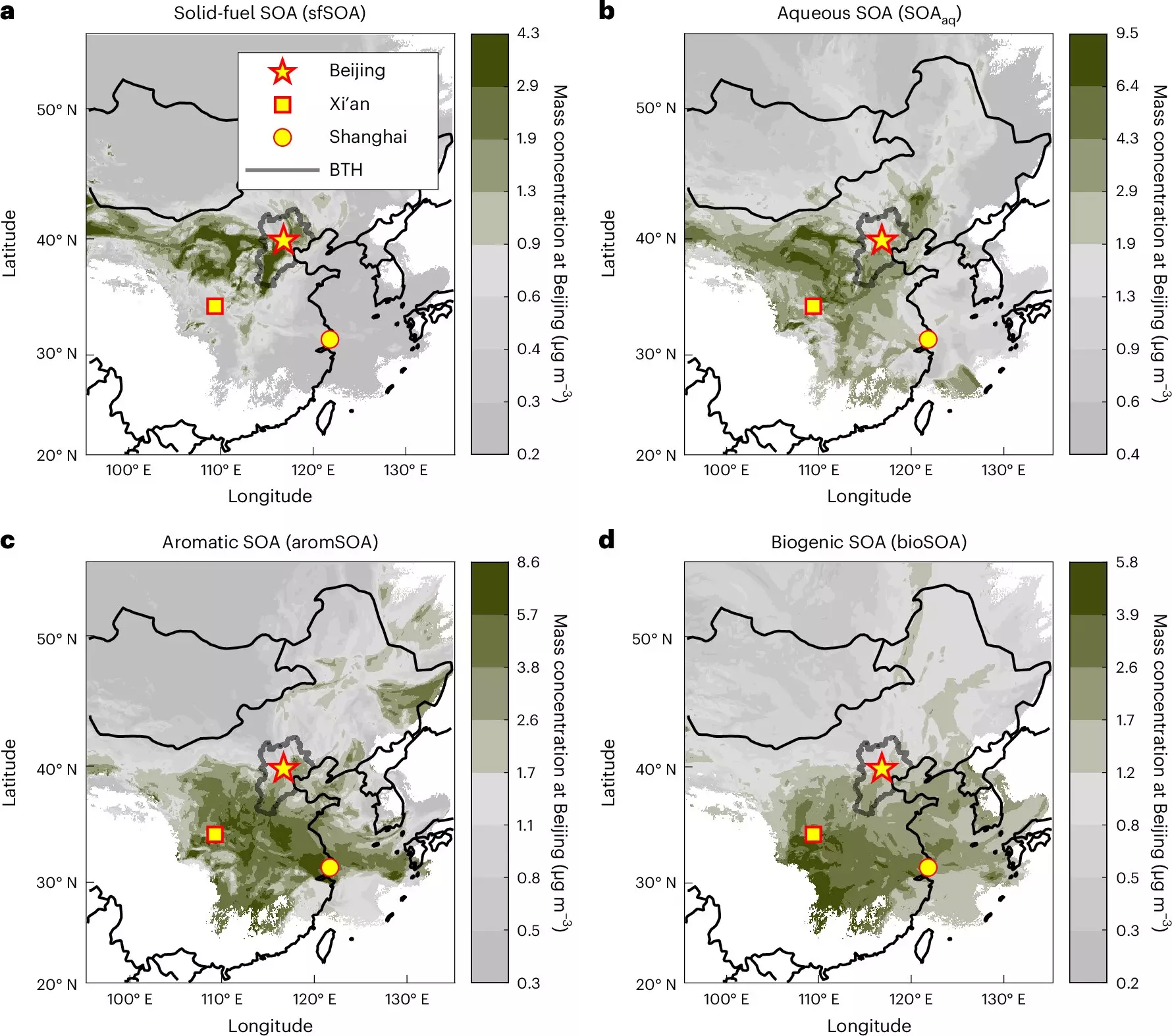Air pollution has become one of the most pressing global health crises, claiming millions of lives each year. The impact of this environmental issue is especially evident in urban areas where population density and industrial activities converge, creating a toxic atmosphere. In cities like Beijing, where smog is a ubiquitous concern, it is crucial to identify the various sources that contribute to this illusive haze. However, the intricate nature of air pollution, exacerbated by chemical reactions and the interplay between various pollutants, poses significant challenges to researchers. Recent advancements by an international team of scientists led by the Paul Scherrer Institute (PSI) have introduced a novel methodology that promises to shed light on the origins of Beijing’s notorious smog.
In a groundbreaking study led by environmental scientist Kaspar Dällenbach, researchers have employed a mobile aerosol mass spectrometer that permits real-time analysis of airborne pollutants at a molecular level. This technological innovation allows scientists to dissect the complex composition of smog and provides a clearer understanding of the various pollutants contributing to air quality degradation. By collaborating with institutions such as the Beijing University of Chemical Technology and the University of Helsinki, the research team aimed to unravel the patterns of aerosol formation and transportation, offering new insights into the seasonal variations of pollution sources.
The study’s methodology involved measuring air composition atop the Beijing University of Chemical Technology and meticulously comparing pollution characteristics between summer and winter months. Such seasonal analysis is vital since atmospheric conditions and pollution sources can differ dramatically over the course of the year.
One of the critical findings of Dällenbach’s research is that the sources of particulate matter change between seasons. During winter months, secondary organic aerosols primarily stem from the combustion of wood and coal, primarily originating from the greater Beijing-Tianjin-Hebei region. This is particularly concerning for residents, as heating practices during the colder months can lead to increased emissions from household and industrial activities.
In contrast, the summer months see air quality dominated by urban emissions, with pollutants flowing in from southern regions—particularly from the Xi’an-Shanghai-Beijing traffic corridor. This dynamic nature of pollution underscores the fact that air quality is not merely a local issue but a regional one, influenced by meteorological conditions and industrial activities across vast distances.
Dällenbach emphasized the complexity of the regional environmental phenomenon, pointing out that effective air quality management in Beijing must go beyond local initiatives. Due to the vast network of pollution sources extending hundreds of kilometers, a coordinated strategy involving multiple regions is essential for meaningful reductions in air pollution. Continued monitoring and adaptation of policies based on real-time data become critical components of a comprehensive approach to tackling smog.
Despite some progress in curbing emissions—such as reductions in sulfur dioxide from coal burning—much work remains to be done. The fact that substantial segments of the population continue to face poor air quality reflects the ongoing challenges in managing and mitigating pollution.
Interestingly, the methodology and insights gained from this study are not confined to Beijing alone. The research team is also leveraging their findings to address air pollution issues in Europe and other urban centers within the Global South, where data on smog dynamics is often lacking. By sharing knowledge and innovative techniques, the researchers hope to contribute to a global effort aimed at improving air quality and public health.
In summarizing their efforts, Dällenbach and his team reinforce the urgency of addressing air pollution from a holistic perspective. In cities facing similar challenges, understanding the spatial and temporal dynamics of pollution sources can pave the way for actionable solutions. A combined effort between policymakers, scientists, and local communities can foster a healthier environment and ultimately save lives. The groundbreaking work conducted by the PSI team serves as a pivotal step forward, emphasizing that informed, collaborative action is necessary to combat the pervasive issue of air pollution both in Beijing and across the globe.

